- عنوان کتاب: Image Processing and Computer Vision Masterclass with Python
- نویسنده: Sandipan Dey
- حوزه: پردازش تصویر, بینایی کامپیوتر
- سال انتشار: 2025
- تعداد صفحه: 739
- زبان اصلی: انگلیسی
- نوع فایل: pdf
- حجم فایل: 12.0 مگابایت
این کتاب برای پاسخگویی به تقاضای رو به رشد برای یک منبع کاربردی و مسئلهمحور که زبانآموزان را در مباحث پیشرفته در بینایی کامپیوتر مدرن راهنمایی کند، نوشته شده است. این کتاب بر اساس دانش بنیادی نوشته شده و به خوانندگان سفری عملی را در مجموعهای متنوع از تکنیکها – از پردازش تصویر کلاسیک گرفته تا یادگیری عمیق پیشرفته و مدلهای هوش مصنوعی مولد – ارائه میدهد. انتخاب آگاهانهای برای پیروی از رویکرد «اولویت با مسئله» صورت گرفته است، که در آن چالشهای دنیای واقعی معرفی و سپس از طریق روشهای مختلف بررسی میشوند. در بینایی کامپیوتر، به ندرت یک راه حل صحیح برای حل یک مسئله وجود دارد. در عوض، راهحلها اغلب توسط عواملی مانند زمینه برنامه، محدودیتهای دادهها و نیازهای عملکردی شکل میگیرند. بنابراین، هدف این کتاب تجویز بهینهترین یا کارآمدترین روش در هر مورد نیست، بلکه قرار دادن خوانندگان در معرض طیف گستردهای از تکنیکها است. هدف این است که به آنها کمک شود تا بینش و انعطافپذیری لازم را برای انتخاب – یا حتی طراحی – بهترین راهحل برای سناریوی منحصر به فرد خود، توسعه دهند. هر فصل به گونهای ساختار یافته است که شامل تئوری پیشزمینه لازم باشد و پس از آن، نمایشهای کد پایتون با توضیح خوب با استفاده از کتابخانههای پرکاربرد مانند OpenCV، scikit-image، SimpleITK، PyTorch، TensorFlow، Keras و موارد دیگر ارائه میشود. به خوانندگان توصیه میشود که با مثالهای عملی نه به عنوان الگوهای ثابت، بلکه به عنوان سکوی پرتابی برای آزمایش، سازگاری و یادگیری عمیقتر برخورد کنند. با توجه به اکوسیستم پویا و در حال تکامل پایتون، اذعان میشود که برخی از توابع یا APIهای مورد استفاده در این کتاب ممکن است در آینده منسوخ یا اصلاح شوند. با این حال، خوانندگان نباید از چنین تغییراتی دلسرد شوند. هنگامی که مفاهیم اصلی درک شدند، اصلاح، اشکالزدایی و تطبیق کد با کتابخانههای در حال تکامل نه تنها قابل مدیریت میشود، بلکه یک فرصت یادگیری عالی نیز خواهد بود. در این فرآیند تکراری عیبیابی و کشف است که تخصص واقعی فرد شروع به شکوفایی میکند. این کتاب فرض میکند که خوانندگان از قبل با برنامهنویسی پایتون راحت هستند و دانش بنیادی در پردازش تصویر، یادگیری ماشین، یادگیری عمیق و رشتههای ریاضی مانند جبر خطی، حساب دیفرانسیل و انتگرال و احتمال دارند. برای خوانندگانی که مایل به ایجاد یا تقویت این پایه هستند، اکیداً توصیه میشود کتاب همراه «کلاس پیشرفته پردازش تصویر با پایتون» را که توسط همین نویسنده نوشته شده است، مطالعه کنند. در نهایت، هدف این کتاب راهنمایی، الهامبخشی و توانمندسازی است. راهحلهای ارائه شده، سنگهای راه هستند، نه خطوط پایان. امید است که خوانندگان نه تنها مهارتهای عملی کسب کنند، بلکه حس شادی و جذابیت را در حل مسائل بصری ایجاد کنند. سفر در پردازش تصویر و بینایی کامپیوتر غنی، چالشبرانگیز و بسیار ارزشمند است – باشد که از هر مرحله از آن لذت ببرید. به کلاس پیشرفته خوش آمدید. بگذارید سفر آغاز شود. فصل 1: بازیابی تصویر و مسائل معکوس در پردازش تصویر – این فصل مفاهیم اساسی در بازیابی تصویر و مسائل معکوس را معرفی میکند. با فرمولبندی ریاضی مدلهای تخریب شروع میشود و تکنیکهای مختلف حذف نویز و ماتزدایی، چه کلاسیک و چه مدرن، را بررسی میکند. تکنیکهای کلیدی شامل فیلتر میانه وزنی، دکانولوشن غیرکور و کور (به عنوان مثال، ریچاردسون-لوسی)، کمینهسازی کل تغییرات، حذف نویز مبتنی بر موجک، میانگین غیرمحلی، فیلتر دوطرفه، تخمین بیزی MAP با پیشینهای MRF و حذف نویز مبتنی بر PCA هسته – همه در پایتون نشان داده شدهاند. فصل 2: بازیابی بیشتر تصویر و بازسازی تصویر – با تکیه بر فصل قبل، این بخش عمیقتر به بازیابی تصویر با استفاده از تکنیکهای عصبی میپردازد. این بخش حذف نویز مبتنی بر خودرمزگذار، ماتزدایی کور مبتنی بر GAN (DeblurGAN) و رویکردهای متعدد برای بازسازی تصویر را پوشش میدهد. مباحث شامل فیلتر انتشار ناهمسانگرد، نقاشی عمیق ساده تصویر با استفاده از Keras و بازسازی معنایی با استفاده از DCGANها، با مثالهای کد غنی برای تقویت یادگیری است. فصل 3: قطعهبندی تصویر – قطعهبندی یک مسئله اصلی در بینایی است. این فصل تکنیکهای قطعهبندی بنیادی، از جمله برش سطح خاکستری و صفحه بیتی، روشهای آستانهگذاری و قطعهبندی مبتنی بر خوشهبندی را معرفی میکند. همچنین الگوریتمهای پیشرفتهای مانند MeanShift، watershed، GrabCut، RandomWalk و قطعهبندی SLIC/NCut را با استفاده از کتابخانههای پایتون مانند OpenCV، scikit-learn و scikit-image پوشش میدهد. فصل 4: قطعهبندی بیشتر تصویر – این فصل قطعهبندی را به مباحث پیشرفتهتر و کاربردیتر گسترش میدهد. این فصل تشخیص پوست انسان با استفاده از طبقهبندیکنندههای دودویی کلاسیک، برچسبگذاری اجزای متصل و جداسازی پسزمینه ویدیو با استفاده از مدلهای مخلوط گاوسی را پوشش میدهد. تکنیکهای قطعهبندی مبتنی بر یادگیری عمیق مانند DeepLabV3+، ENet و Detectron2 به همراه کارهای عملی مانند جایگزینی پسزمینه در تصاویر/ویدیوها و تشخیص دادههای پرت با رمزگذارهای خودکار بررسی میشوند. فصل 5: استخراج ویژگی تصویر و کاربردهای آن: ثبت تصویر – تشخیص ویژگی یک بلوک سازنده حیاتی برای بسیاری از برنامهها است. این فصل روشهای تشخیص و توصیف نقاط کلیدی را بررسی میکند و …
This book was conceived to address the growing demand for a practical, problem-oriented resource that guides learners through advanced topics in modern computer vision. It was written to build upon foundational knowledge and to offer readers a hands-on journey through a diverse set of techniques—from classical image processing to cutting-edge deep learning and generative AI models. A deliberate choice was made to follow a problem-first approach, where real-world challenges are introduced and then explored through a variety of methods. In computer vision, there is rarely a single correct way to solve a problem. Instead, solutions are often shaped by factors such as application context, data constraints, and performance needs. Thus, this book aims not to prescribe the most optimal or efficient method in every case, but rather to expose readers to a broad spectrum of techniques. The goal is to help them develop the insight and flexibility to choose —or even design—the best solution for their own unique scenario. Each chapter is structured to include the necessary background theory, followed by well-explained Python code demonstrations using widely adopted libraries such as OpenCV, scikit-image, SimpleITK, PyTorch, TensorFlow, Keras, and more. Readers are encouraged to treat the hands-on examples not as fixed templates, but as launchpads for experimentation, adaptation, and deeper learning. Given Python’s dynamic and ever-evolving ecosystem, it is acknowledged that some functions or APIs used in this book may be deprecated or modified in the future. However, readers should not be discouraged by such changes. Once the core concepts are understood, tweaking, debugging, and adapting code to evolving libraries becomes not only manageable but also an excellent learning opportunity. It is in this iterative process of troubleshooting and discovery that one’s true expertise begins to flourish. This book assumes that readers are already comfortable with Python programming and possess foundational knowledge in image processing, machine learning, deep learning, and mathematical disciplines such as linear algebra, calculus, and probability. For readers who wish to build or reinforce this foundation, it is strongly recommended to explore the companion book Image Processing Masterclass with Python, authored by the same writer. Ultimately, the aim of this book is to guide, inspire, and empower. The solutions presented are stepping stones, not finish lines. It is hoped that readers will not only gain practical skills but also develop a sense of joy and fascination in solving visual problems. The journey through image processing and computer vision is rich, challenging, and immensely rewarding—may you enjoy every step of it. Welcome to the masterclass. Let the journey begin. Chapter 1: Image Restoration and Inverse Problems in Image Processing – This chapter introduces fundamental concepts in image restoration and inverse problems. It begins with the mathematical formulation of degradation models and explores various denoising and deblurring techniques, both classical and modern. Key techniques include weighted median filtering, non-blind and blind deconvolution (for example, Richardson-Lucy), total variation minimization, wavelet-based denoising, non-local means, bilateral filtering, MAP Bayesian estimation with MRF priors, and kernel PCA-based denoising—all demonstrated in Python. Chapter 2: More Image Restoration and Image Inpainting – Building on the previous chapter, this section dives deeper into image restoration using neural techniques. It covers autoencoder-based denoising, GANbased blind deblurring (DeblurGAN), and multiple approaches to image inpainting. Topics include anisotropic diffusion filtering, simple deep image painting using Keras, and semantic inpainting using DCGANs, with rich code examples to reinforce learning. Chapter 3: Image Segmentation – Segmentation is a core problem in vision. This chapter introduces foundational segmentation techniques, including gray-level and bitplane slicing, thresholding methods, and clustering-based segmentation. It also covers advanced algorithms like MeanShift, watershed, GrabCut, RandomWalk, and SLIC/NCut segmentation using Python libraries like OpenCV, scikit-learn, and scikit-image. Chapter 4: More Image Segmentation – This chapter extends segmentation to more advanced and applied topics. It covers human skin detection using classical binary classifiers, labeling connected components, and video background separation using Gaussian Mixture Models. Deep learning-based segmentation techniques such as DeepLabV3+, ENet, and Detectron2 are explored, along with practical tasks like background replacement in images/videos and outlier detection with autoencoders. Chapter 5: Image Feature Extraction and Its Applications: Image Registration – Feature detection is a critical building block for many applications. This chapter reviews keypoint detection and description methods, and focuses on feature-based image alignment and registration. Topics include rigid and deformable registration with tools like pystackreg, pyelastix, SimpleITK, and the deep learningbased VoxelMorph model using TensorFlow/Keras. Chapter 6: Applications of Image Feature Extraction – This chapter showcases how feature extraction powers realworld applications. Examples include image panorama stitching with OpenCV, facial feature analysis using NMF, LBPH, and Gabor filters, and pedestrian detection using HOG and HAAR-Cascade features. Each use case is backed by end-to-end Python code. Chapter 7: Image Classification – Image classification forms the foundation of many AI systems. This chapter walks through the entire pipeline—from classical machine learning approaches for classifying Fashion-MNIST to deep learning models using TensorFlow/Keras. It also demonstrates transfer learning with PyTorch and training classifiers on custom datasets using pre-trained models. Chapter 8: Object Detection and Recognition – Delve into object localization with deep learning. Topics include using pre-trained models, YOLOv4 with transfer learning, instance-level tasks like selective coloring using Mask RCNN, face verification with DeepFace, and barcode/QR detection. Hands-on examples provide a strong basis for object detection projects. Chapter 9: Application of Image Processing and Computer Vision in Medical Imaging – Explore the rich world of medical image analysis. This chapter covers handling and visualizing DICOM and NIfTI formats using libraries like pydicom, nibabel, and ITK. It includes segmentation of brain MRIs, 3D rendering, CT reconstruction, and pneumonia classification using deep CNNs—highlighting the real impact of vision in healthcare. Chapter 10: Application of Image Processing and Computer Vision in Medical Imaging and Remote Sensing – This dual-topic chapter covers both medical and remote sensing applications. Medical topics include COVID- 19 detection, prostate segmentation, and brain tumor segmentation using nnUNet and U-Net. Remote sensing topics include segmentation of satellite images (for example, FloodNet, SN7), and landcover classification using ResNet101 with Fastai. It illustrates how vision systems solve problems beyond consumer devices. Chapter 11: Miscellaneous Problems in Image Processing and Computer Vision – This final chapter brings together innovative and creative applications of vision. Topics include deep dreaming, neural style transfer, image colorization, visualizing CNN features with t-SNE, generating 3D point clouds, AR with OpenCV, video editing with MoviePy, image generation from text with GAN-CLS, seamless cloning, and DALL-E-based generation—pushing the boundaries of what is possible in computer vision.
این کتاب را میتوانید از لینک زیر بصورت رایگان دانلود کنید:
Download: Image Processing and Computer Vision Masterclass with Python





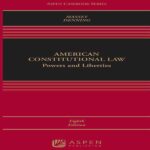






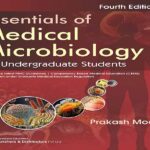
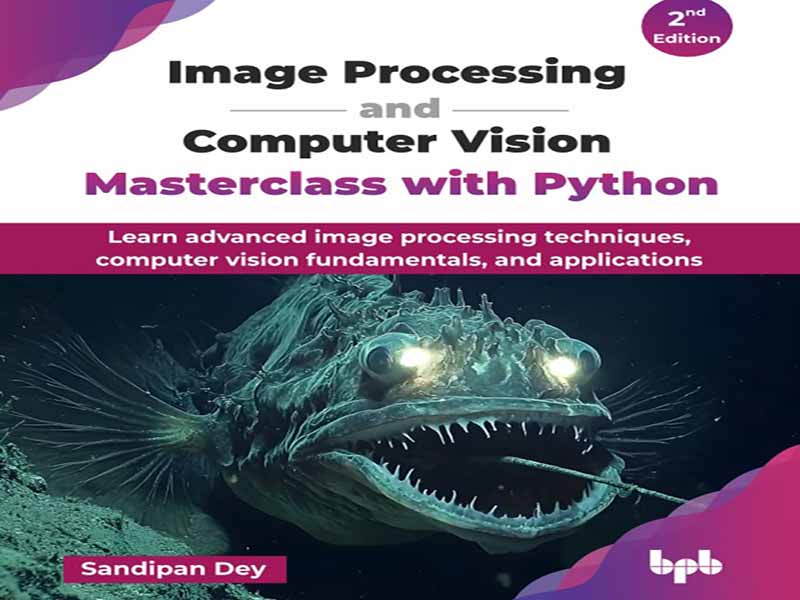

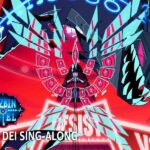



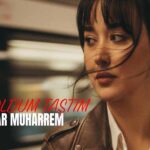



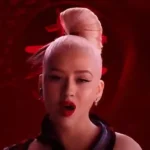











نظرات کاربران